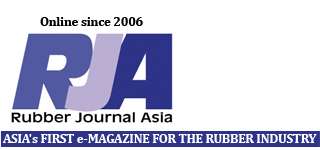Crashpads and floor coverings from recycled rubber is not exactly new, but a further advancement is high-quality plastics from the same. A new rubber recycling technology involving an environmentally-friendly material mix converts rubber into plastic products.
Every year, 22 million tonnes of rubber are processed worldwide. Production consists largely of manufacturing tyres for cars, trucks, bicycles and others.
Once these rubber products reach the end of their use, they are put into an incinerator and recycled into secondary parts. They are then powderised and mixed into residues, such as for floor coverings.
But that was before EPMT was invented by Dr Holger Wack and other scientists at UMSICHT IN Oberhausen, Germany. The team developed a material that can turn rubber waste into products such as handles, door knobs, wheels and splash guard covers, and castors.
According to Dr Wack, the process begins with rubber residue granules in 3mm particles, which are cooled with liquid nitrogen and ground into elastomeric powders called Elastomer Powder Modified Thermoplastics (EPMT). These are mixed into thermoplastics and additives, and formed into the desired products through injection moulding or extrusion.
Wack observes: ”EPMT can contain up to 80 percent residual rubber; only 20 per cent is made up of thermoplastics.” (RJA)

